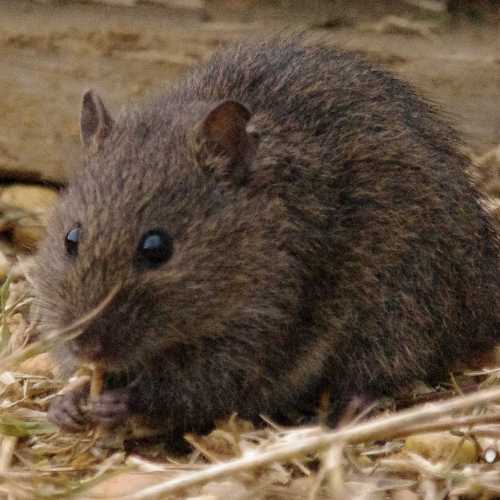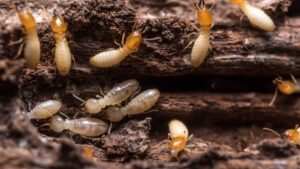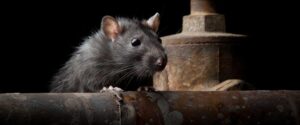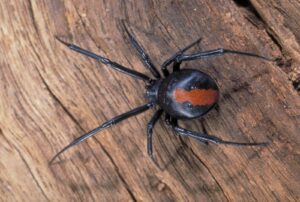The Swamp Rat (Rattus lutreolus)
Swamp Rats may not be the first rodent that comes to mind when thinking about pest control in Central Coast and Lake Macquarie, NSW, Australia. However, these native rodents can be found in various wetland habitats in the region and have unique characteristics and behaviors that set them apart from more commonly encountered species like the Black Rat, Brown Rat, and House Mouse. In this comprehensive guide, we will explore the biology, ecology, and potential impacts of Swamp Rats on local ecosystems and human populations in Central Coast and Lake Macquarie.
Biology and Characteristics of Swamp Rats:
- Size: Swamp Rats are medium-sized rodents, with adults typically measuring between 12-20 cm in body length, with an additional 10-15 cm tail length.
- Color: Their fur is dense and water-repellent, with a dark brown to black color on their upper body and lighter grey or cream-colored underside.
- Physical features: Swamp Rats have small, rounded ears and a blunt, rounded snout. Their tails are semi-prehensile and covered in small scales and sparse hairs.
Ecology and Habitat:
Swamp Rats are native to Australia and are predominantly found in the southeastern regions, including New South Wales, Victoria, and Tasmania. They prefer wetland habitats such as swamps, marshes, and riparian zones near rivers and streams. These rodents are excellent swimmers and climbers, which allows them to navigate their wet and densely vegetated environments with ease.
Swamp Rats are primarily nocturnal and are most active during the night when they search for food. Their diet consists of a wide range of plant material, including stems, leaves, seeds, and roots, as well as small insects and other invertebrates.
Reproduction and Life Cycle:
Swamp Rats are known to breed throughout the year, with a peak in reproductive activity during the warmer months. Females can give birth to multiple litters each year, with each litter consisting of 3-5 young on average. The gestation period for Swamp Rats is approximately 23 days, and the young are born hairless and blind. They are weaned after about 3-4 weeks, and sexual maturity is reached at around 3-4 months of age.
Potential Impacts on Ecosystems and Human Populations:
Swamp Rats play a vital role in their native ecosystems, acting as both herbivores and prey for various predators, such as birds of prey, snakes, and larger mammals. They can help maintain the balance and diversity of wetland habitats by consuming plant material and providing a food source for other species.
Despite their ecological importance, Swamp Rats can also have negative impacts in certain situations, particularly when they come into contact with human populations or agricultural areas. Although less common than other rodent species, Swamp Rats can still cause damage to crops, gardens, and infrastructure by feeding on plants and burrowing into the ground. Additionally, like other rodents, Swamp Rats are potential carriers of diseases that can affect both humans and other animals.
Prevention and Control Measures:
While Swamp Rats are less likely to be encountered in urban environments compared to other rodent species, it’s essential to take preventative measures if you live near wetland habitats or have experienced issues with these rodents in the past. Here are some tips to help minimize the risk of Swamp Rat infestations:
- Habitat modification: Reduce the attractiveness of your property to Swamp Rats by removing dense vegetation, particularly near the ground level, and maintaining a well-kept lawn. This will make your yard less appealing for these rodents to establish a home.
- Exclusion methods: Seal any gaps or openings around your home’s foundation, walls, and roof to prevent Swamp Rats from gaining access to your living spaces. Pay particular attention to areas near plumbing and electrical lines, as rodents may use these as entry points.
- Proper storage of food and waste: Ensure that all food items are stored in airtight containers and that waste is disposed of regularly in sealed bins. This will help reduce the likelihood of attracting Swamp Rats to your property.
- Regular inspection: Routinely inspect your property for signs of Swamp Rat activity, such as burrows, tracks, or droppings. Early detection is key to preventing extensive damage or potential health risks.
- Trapping: If you have identified a Swamp Rat infestation on your property, trapping can be an effective method to control their population. Use live-capture traps baited with plant material or small pieces of fruit, and release the captured rodents at least several kilometers away from your property.
- Consult a professional: If you are unsure about how to deal with a Swamp Rat infestation or if the problem persists despite your efforts, it may be necessary to consult a licensed pest control professional for assistance.
Conclusion:
Swamp Rats are native rodents found in the wetland habitats of Central Coast and Lake Macquarie, NSW, Australia. Although they are less commonly associated with human populations compared to other rodent species, Swamp Rats can still cause damage and pose health risks if they come into contact with residential or agricultural areas. By understanding their biology, ecology, and potential impacts, homeowners and land managers can take appropriate preventative measures to minimize the risk of infestations and protect their properties and families from these native rodents.







